My name is Neil Hartmann and I am a self-admitted “Heli Addict.”
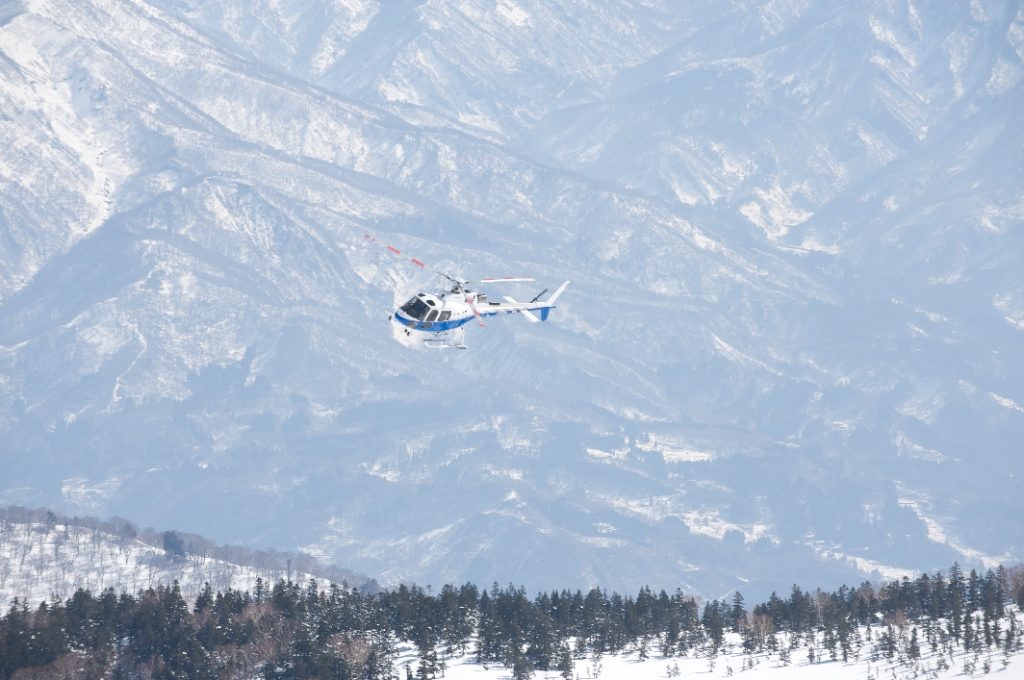
My name is Neil Hartmann and I am a self-admitted “Heli Addict.”
I admit it. I have an addiction to helicopters; specifically riding in them in winter with my snowboard. It’s been said admitting you have a problem is the first step to recovery but, in my case, I hope it’s not true. I have traveled as far as New Zealand to get my “heli-boarding” fix.
The addiction is expensive. I spent nearly $6,000 on one such trip to Alaska, and I’d do it again in a heartbeat. I dream about helicopters, even getting withdrawal symptoms after a day of heli-boarding. Symptoms include—but are not limited to—refusal to hike up hills, blatant gloating at après ski establishments and calling Visa to check your credit limit.
I don’t mean to make light of people suffering more debilitating addictions, but if there is a heli-boarders anonymous, sign me up…just do not expect me to show up in winter.
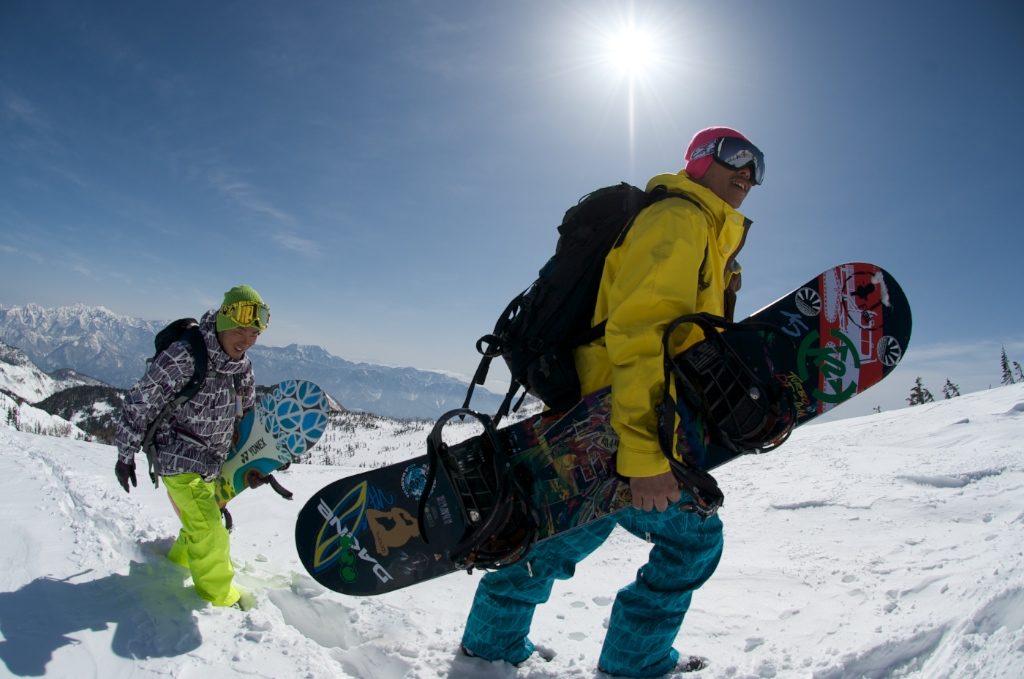
Heli History
The earliest reference to vertical flight comes from a book written in China during the 4th century (400 B.C.), and then Leonardo da Vinci created the first “design” of a helicopter in the 1480s. He called it an “aerial screw.” Thankfully, Gustave de Ponton d’Amecourt, a French inventor, coined the word “helicopter” in 1861. If he hadn’t, I would be addicted to “aerial screwing” and that would be something else entirely (Wikipedia: Mile High Club).
I also have to thank Hans Gmoser, an Austrian mountain guide who immigrated to Canada; he is credited as having started the heli-skiing industry in British Columbia in 1965. In the last 50 years, heli-skiing operations have spread and prospered around the globe. It is a status symbol for the well-to-do but, as with any addiction, it does not discriminate. You can get hooked no matter what your tax bracket.
Japan Heli
Here in Japan, strict air flight laws and a lot of political red tape have kept heli-skiing to a minimum, but a few resort destinations now feature heli-skiing as an option. There are two kinds of heli operations, should you be a newbie to the world of choppers.
First is the Canadian model pioneered by the aforementioned Gmoser, in which the heli is used as a lift, shuttling skiers up to the tops of peaks for between five and 10 runs per day. If you really want to satisfy your addiction, this is the way to go, but beware of the potential to overdose…uh, I mean overdo it. Hokkaido’s Alpha Resort Tomamu has adopted this style with great results. If you have a deep wallet and want to ride a private mountain with a few friends in deep powder, this is for you.
The other model is the European one, in which the heli is used as a taxi, dropping off skiers on a high peak where you are on your own to return to the starting point. It was during a week-long springtime boarding trip to the Hakuba area that I discovered a version of the European model at Tsugaike Kogen.
Tucked away in the northwest corner of Nagano, Tsugaike Kogen is one of the least known resorts in the Hakuba area. Overshadowed by her bigger neighbors Happo-One and Hakuba 47, Tsugaike is often overlooked, which can mean fewer people and more fresh snow even on those long weekends. There are plenty of courses for all level of skiers/boarders, the longest being more than six kilometers.
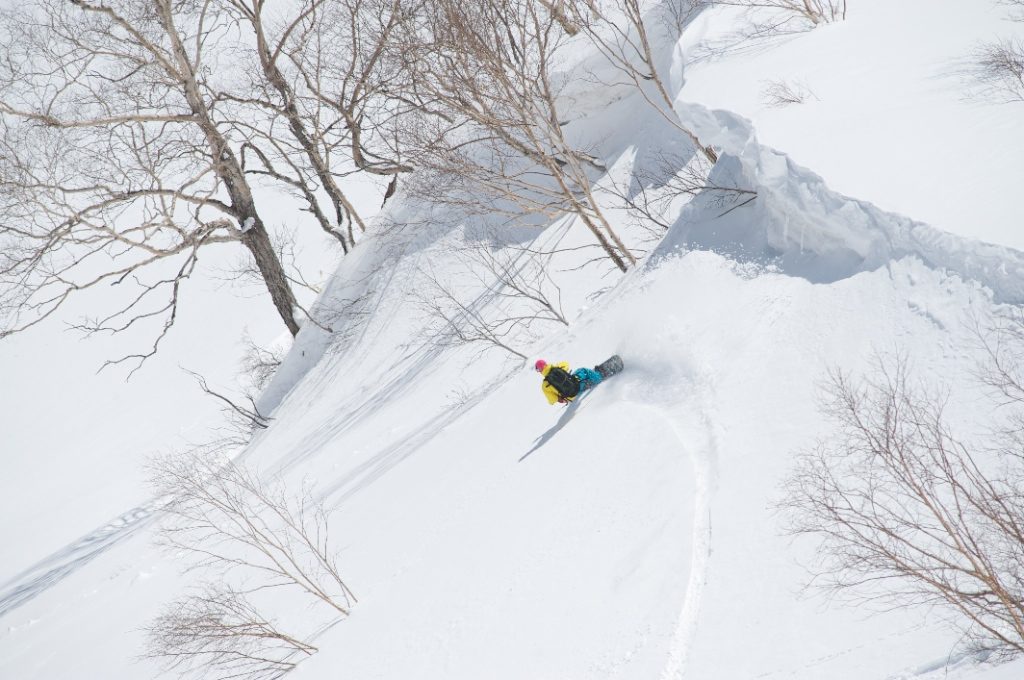
Taking Flight
After arriving in Tsugaike during the first week of April, I was told about the heli-operation. I immediately lost all interest riding the courses, as I felt the sudden twinge of my addiction coming on. I needed to get in that chopper badly.
The Tsugaike heli service runs from mid-March until the end of the ski season. A single flight costs about ¥9,000 with about five to 10 minutes airtime. Covering that same distance the slow way would require two gondola rides followed by a two-hour hike, multiple breaks, snacking on mixed nuts and other hippy food, sweating… There is of course great satisfaction getting up there on your own two feet but—forget it—I am taking the heli.
Tsugaike Kogen features the longest Gondola in Japan; so long it even has a station part way up. Called the Shirakaba Station, this is from where the heli departs. On fly day we arrived at the station at 7 a.m. sharp. After coughing up our hard-earned yen, we signed the necessary paperwork stating we are solely responsible for our well-being in the case our euphoria clouds our judgment on the way down resulting in injury or death.
When you do get down safely, you receive a cool Tsugaike helicopter patch. This handy item can be used for bragging rights later that evening in the pub and may help ward off withdrawal symptoms.
The Tsugaike heli operation does not provide mountain guides, so you are on your own when skiing, but the patrol staff is there to help you board the heli and then again at the top to explain the course and basic safety precautions.
There were at least 35 to 40 people in line for the heli-taxi that morning including a few families. Thanks to my big camera and zoom lens, we were ushered to the front of the line and got the very first ride to the top.
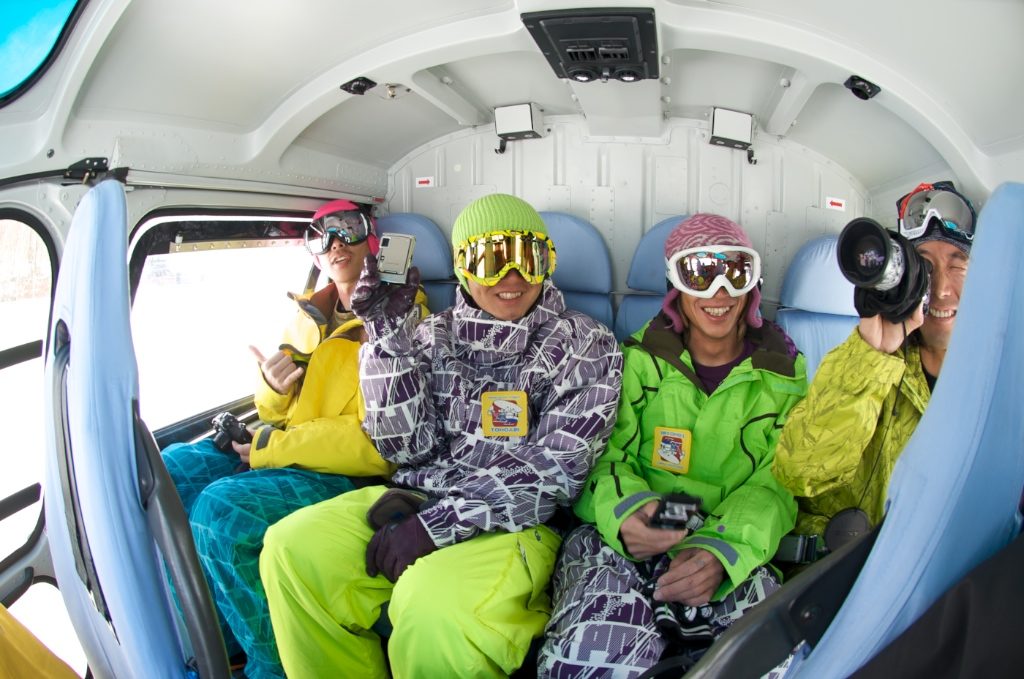
Coming Down
My heart raced and my shutter finger clicked away as the heli rose into the early morning sky. The view of the Tsugaike ridge and the extended Southern Alps was breathtaking. In a few short minutes, the heli nosed in to the landing zone on the highlands called Tengupara and dropped us off. We held down our gear as the pilot revved the engine and hovered above, then made a fancy turn and returned to the valley below for another load of skiers.
We stood around gaping at the views like a bunch of clueless tourists until the patrol shooed us off the landing zone. Next was a simple five-minute briefing by the patrol on duty at the top. It is technically not a course, but the patrol has set up flags at easily recognizable intervals. Stay within 50 meters of the flags, and you will enjoy a safe 14-km. run back to the base.
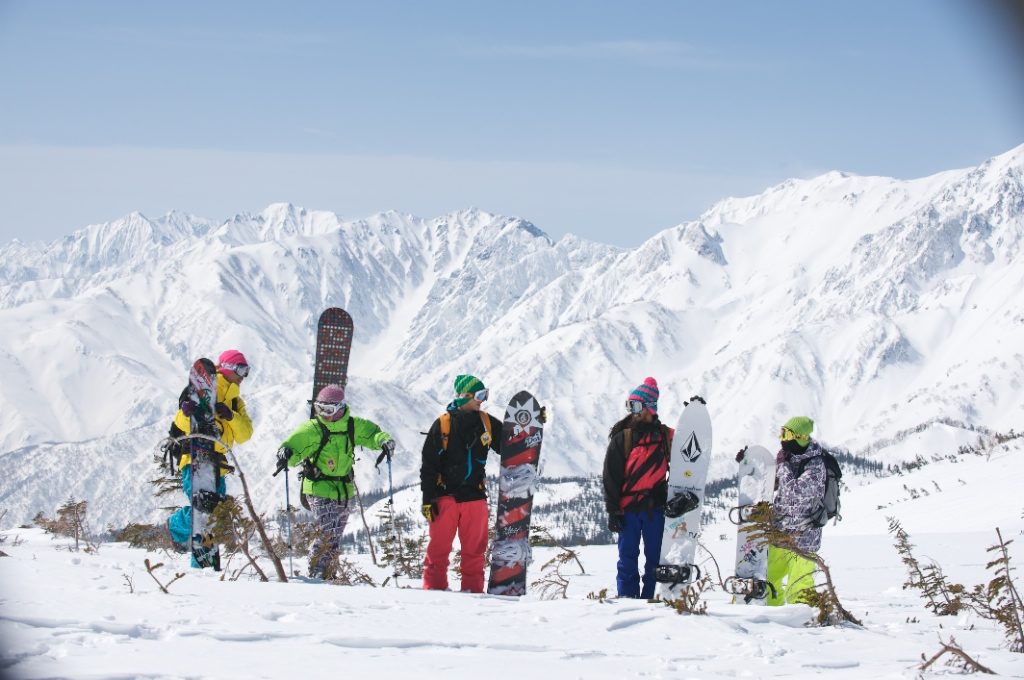
Intermediate skiers or boarders will have no problem getting down the mountain. You can expect corn snow in the spring, but rain at the base the night before our trip turned to snow on the mountain, and we found a beautiful layer of spring powder. If you have a local guide, as we did, you are welcome to explore further into the extensive backcountry and powder bowls.
A two-hour traverse hike will get you to the top of the Tsugaike ridge and, from there, you will be screaming with joy as you make turn after wide-open turn through the bowls to the valley far below.
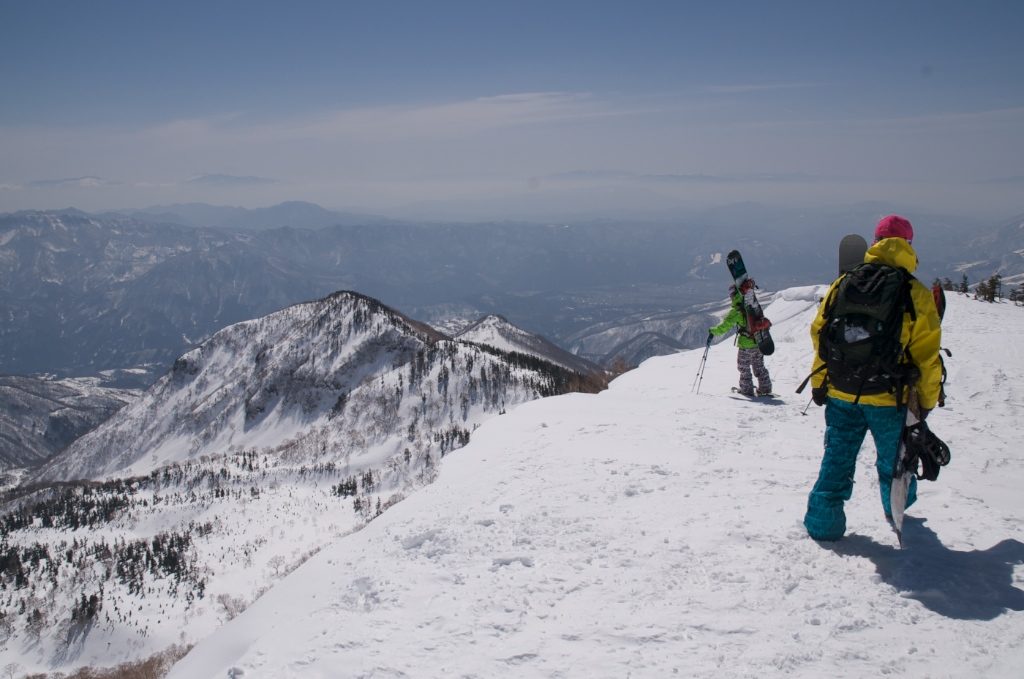
On this day, we decided to go lazy-man style; no hiking. We wanted to get straight to the riding. Our guide led us through a series of back bowls before making a short 30-minute hike back to a ridge above the ski area.
We could catch glimpses of the snowboard park through the trees as we hooted at each other during our descent through the spring powder. It took about two hours at a leisurely pace to make it back to the top gondola station where we enjoyed a beer or two as we came down from the “high.”
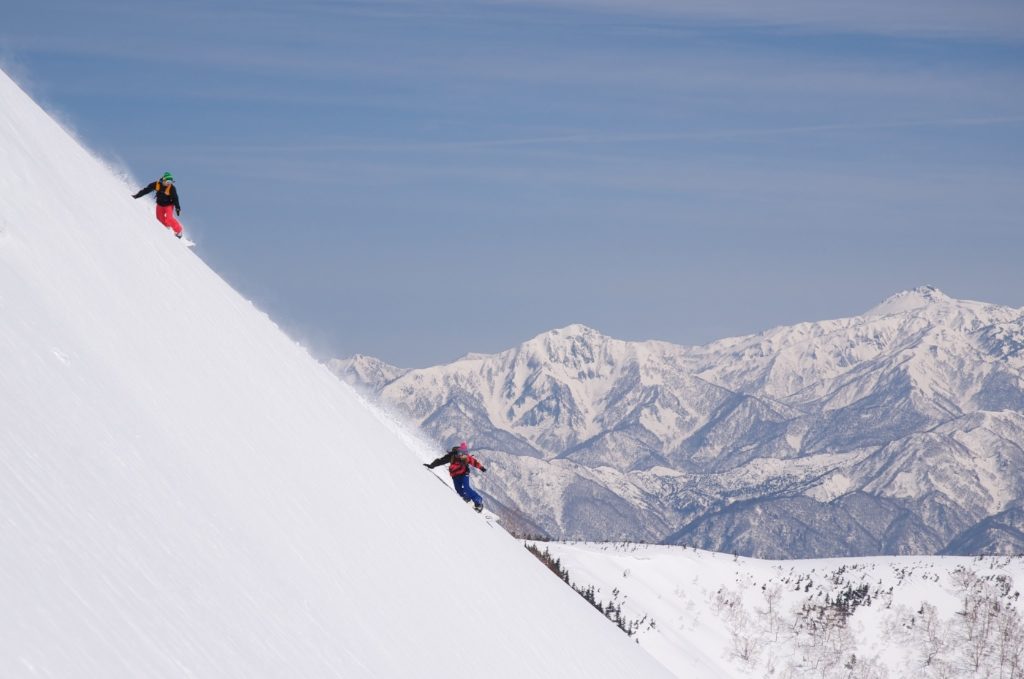
Withdrawal pains were already starting to set in. I found myself repeatedly checking my wallet to see if I had more cash for another flight and flashing my Tsugaike Helicopter patch to random people in line to buy ice cream. From their disinterested reactions, I could tell they didn’t understand my plight. It was clear I was going to need something to calm my nerves. The prescription was a traditional onsen, just what the doctor ordered.
Oh, did I mention my addiction to Japanese hot springs?
Getting There
By Train: Tsugaike Kogen can be reached from Hakuba Oike Station using the Chuo and Oito lines from Tokyo. It is about a four-hour journey. From Osaka, take the Shinkansen to Matsumoto, then transfer to the express service that runs to Hakuba Oike. Buses run from the station to the resort, taking about 20 minutes.
By Car: From Tokyo, take the Chuo Expressway to the Matsumoto Interchange. From there, highway 148 continues northwest through Omachi and onto Hakuba. From there follow the signs to Tsugaike Kogen. From Osaka, also continue onto the Chuo Expressway and follow the same directions.
Accommodation
There are at least 10 slope-side hotels at the base of Tsugaike Kogen, as well as plenty of B&B, lodges and pensions and ryokan in the area. If you want to wing it, stop by the Accommodation Info Desk in front of JR Hakuba train station (Hours: 7 a.m. to 6 p.m.).




